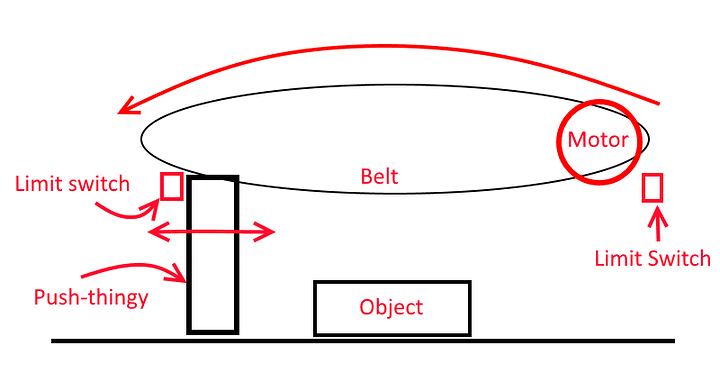This is my first post here. Hi everyone!
I’m making my first foray into automation since (partially) building a crappy robot from instructions found in a Boys’ Life magazine as a kid.
My project involves constructing a set of mechanisms to push small, relatively light objects off a conveyor belt moving at moderate speed. To maximize the number of diversion points on a given length of conveyor, I’d prefer to use bidirectional mechanisms capable of returning fast enough to push an object to the same diversion point twice in a row when required.
Fancy example: https://www.youtube.com/watch?v=ZbDuYo9qHzk
I’d like this to operate at similar speed to the example.
The objects will weigh under 5 pounds, and the belt width/assumed stroke length for my prototype is 8", but I’ll ultimately want to use this on a wider belt, up to 18" or so.
I know that the options include solenoids, servos, and pneumatics (perhaps others I’m missing). My impression is that the upfront cost of the latter two is higher, but that they’ll consume significantly less power to operate.
I know that bidirectional motion would require at least two solenoids if I go that route, and it’s also been suggested to me that a single linear actuator might not have sufficient force on the return stroke (I know it would certainly be less, but most of the linear actuators I see online appear to be designed to push much heavier loads, as in hundreds of pounds, so I’m thinking I might get away with a single actuator for each pair of diversion points).
Anyway, I’m looking for the most cost-effective way to build this, both in terms of up-front cost and in cost of ownership.
I’m fortunate to have a friend who’s an experienced maker and able to assist with many aspects of constructing this thing in terms of the electronics, but he’s not as familiar with the mechanical aspects.
Apologies for any major omissions/mistakes/assumptions contained here, and thanks in advance for any and all advice!


